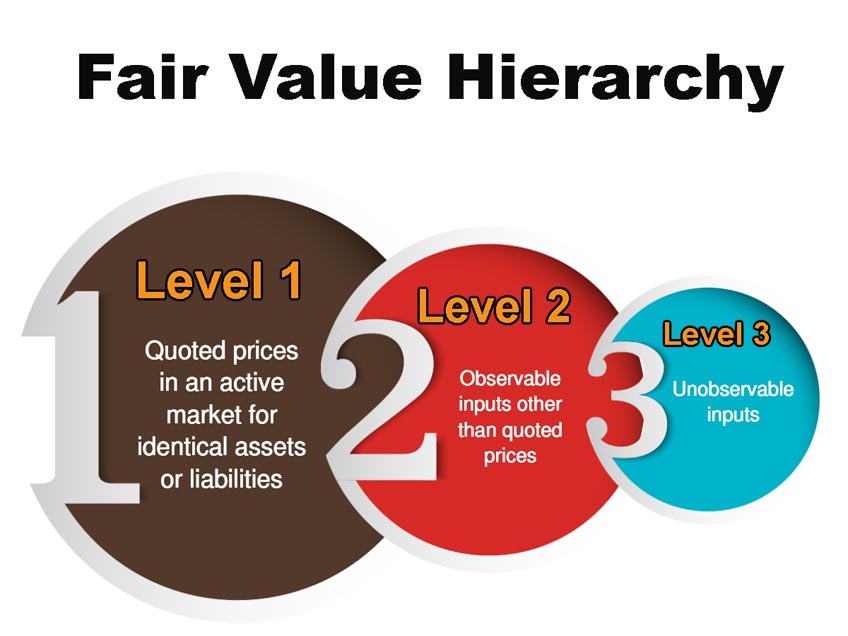
Readily Determinable Fair Value Updates and the Use of Net Asset Value
Does the technical correction to the definition of readily determinable fair value (RDFV) that was issued as part of ASU 2015-10 impact your application of net asset value (NAV) as a practical expedient? If you have investments in funds and apply the NAV as a practical expedient to fair value guidance (and perhaps glossed over the RDFV definition update), you may want to revisit whether this definition change impacts you.
Update to the definition of readily determinable fair value
The FASB has a perpetual project, Technical Corrections and Improvements, that was created in 2010 to address and implement incremental improvements and corrections and to provide clarification to U.S. GAAP. The issues that the FASB addresses through this project are those that are not expected to have a significant effect on current accounting practice or create significant costs to entities to implement. So, for the most part, these amendments do not get a lot of front page attention.
While that was the case when ASU 2015-10, Technical Corrections and Improvements, was issued in June 2015, some are finding that one particular amendment included in that guidance, the update to the definition of readily determinable fair value, may potentially have a more significant impact on certain entities.
ASU 2015-10 revised the definition of readily determinable fair value in the Master Glossary (the amendments are underlined below) to be:
What is readily determinable fair value?
An equity security has a readily determinable fair value if it meets any of the following conditions:
- The fair value of an equity security is readily determinable if sales prices or bid-and-asked quotations are currently available on a securities exchange registered with the U.S. Securities and Exchange Commission (SEC) or in the over-the-counter market, provided that those prices or quotations for the over-the-counter market are publicly reported by the National Association of Securities Dealers Automated Quotations systems or by OTC Markets Group Inc. Restricted stock meets that definition if the restriction terminates within one year.
- The fair value of an equity security traded only in a foreign market is readily determinable if that foreign market is of a breadth and scope comparable to one of the U.S. markets referred to above.
- The fair value of an equity security that is an investment in a mutual fund or in a structure similar to a mutual fund (that is, a limited partnership or a venture capital entity) is readily determinable if the fair value per share (unit) is determined and published and is the basis for current transactions.

What is the impact of the changes?
So, what’s the big fuss about a few additional words to part c of the definition?
Under the updated definition, there are now references to “equity security” and “structure[s] similar to a mutual fund” that must be considered when assessing whether an investment has a readily determinable fair value. More specifically, an entity needs to determine whether an investment is an equity security, whether an investment is a structure similar to a mutual fund, as well as whether the fair value per share for these instruments are published and used as the basis for current transactions.
What happens if an investment now meets the definition of having a readily determinable fair value? Well, there are two potential impacts, especially if the entity elects to use net asset value as a practical expedient to fair value.
Use of NAV as a practical expedient
If you recall, ASC 820, Fair Value Measurements, permits use of the NAV as a practical expedient election if:
- The investment does not have a “readily determinable fair value”
- The investment is an investment company within the scope of ASC 946 (or real estate fund for which industry practice is to measure investment assets at fair value and issue financial statements consistent with principles in ASC 946)
- NAVs calculated consistent with the measurement principles of ASC 946 as of the reporting entity’s measurement date.
Thus, whether an investment has a readily determinable fair value impacts whether or not an entity can apply the NAV as a practical expedient to measure fair value. If the investment now meets the definition of having a readily determinable fair value, the entity will no longer be able to use NAV as a practical expedient to fair value. It will now have to determine the investment’s actual fair value.
Since the changes to the RDFV definition, along with all the amendments in ASU 2015-10, were effective upon issuance, and the FASB did not provide any specific transition guidance, it appears that this not only affects assessments and application of NAV as a practical expedient taking place after the issuance of ASU 2015-10 but retrospectively to previous conclusions and elections.
And the potential impacts to using NAV as a practical expedient don’t end here. There is an additional consideration – fair value hierarchy accounting implications.

Fair value hierarchy
An important component of the FASB’s framework for fair value measurement accounting and disclosures is the fair value hierarchy as it established priorities that are required to be followed in estimating the fair value of assets and liabilities.
The hierarchy prioritizes the inputs to valuation techniques used with the highest priority given to quoted prices in active markets for identical assets or liabilities and the lowest priority given to unobservable inputs. The FASB established the fair value hierarchy with the intention to increase consistency and comparability of fair value measurements and disclosures as well as to provide financial statement users insight into the subjectivity in the determination of fair value measurements made by an entity.
While the objective of the fair value hierarchy is aimed at consistency and comparability, an area of diversity in practice surfaced regarding how investments measured at NAV under the practical expedient were being classified.
The FASB issued ASU 2015-07, Disclosures for Investments in Certain Entities that Calculate Net Asset Value per Share (or its Equivalent) to address this diversity in practice. ASU 2015-07 removed the requirements to categorize investments within the fair value hierarchy for which fair value is measured using the net asset value per share practical expedient
So, whether an investment has a readily determinable fair value also affects whether an entity includes or excludes an equity investment in the fair value hierarchy disclosures. And, if an entity is applying NAV as a practical expedient to an investment but that investment no longer meets the requirements to elect NAV due to the updated RDFV definition, it must include that investment in the fair value hierarchy disclosures.
Want to learn more about fair value measurements? Take a look at our topic page for further discussion about accounting issues, GAAP differences, and more! Or start learning (and earning CPE) today by enrolling in our ASC 820: Fair Value Measurements eLearning course collection.
About GAAP Dynamics
We’re a DIFFERENT type of accounting training firm. We view training as an opportunity to empower professionals to make informed decisions at the right time. Whether it’s U.S. GAAP, IFRS, or audit training, we’ve trained thousands of professionals since 2001, including at some of the world’s largest firms. Our promise: Accurate, relevant, engaging, and fun training. Want to know how GAAP Dynamics can help you? Let’s talk!
Disclaimer
This post is for informational purposes only and should not be relied upon as official accounting guidance. While we’ve ensured accuracy as of the publishing date, standards evolve. Please consult a professional for specific advice.

